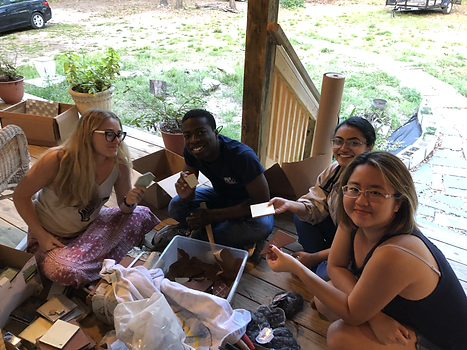My teaching philosophy is rooted in problem-driven learning. I see my task as three-fold: first, I present social problems relevant to the themes of the class; second, I provide the literature and instruction on a range of theoretical and methodological tools that can be used to solve the social problem at hand; third, I facilitate an opportunity for students to work together to construct solutions to the social problem at hand. In each of these stages of learning, I am mindful to engage students with topics of diversity and social equity.
Teaching Philosophy
Teaching Experience
Keene State College
Fall 2024:
-
The Environment of Central New England (Instructor of Record, two sections)
-
Global Water Politics (Instructor of Record, one section)
Spring 2024
-
The Environment of Central New England (Instructor of Record, two sections)
-
Principles of Sustainability (Instructor of Record, one section)
Fall 2023:
-
The Environment of Central New England (Instructor of Record, two sections)
University of Florida
Fall 2015:
-
What is the Good Life? (Three sections, TA)
Spring 2016:
-
What is the Good Life? (Three sections, TA)
Fall 2016:
-
Environmental Politics of the Global South (Instructor of Record)
Spring 2017:
-
What is the Good Life? (Three sections, TA)
Fall 2017:
-
International Environmental Relations (Instructor of Record)
Fall 2018:
-
Writing Across the Disciplines (Instructor of Record, two sections)
-
Writing for Strategic Communication (Instructor of Record)
-
Writing in the Social Sciences (Instructor of Record)
Spring 2019:
-
Writing for Sustainability (Instructor of Record, two sections)
-
Writing in the Social Sciences (Instructor of Record)
Fall 2019:
-
Writing for Strategic Communication (Adjunct Lecturer; Online course).
Spring 2019:
-
Writing for Strategic Communication (Adjunct Lecturer; Online course).
Summer 2020:
-
Technical Writing for Professionalization (Adjunct Lecturer, Online course)
Fall 2020:
-
Writing for Strategic Communication (Adjunct Lecturer, Online course)
Spring 2021:
Technical Writing for Professionalization (Adjunct Lecturer, Online course)
Fall 2021:
-
Writing for Strategic Communication (Online course)
Spring 2022:
-
Writing for Strategic Communication (Online course)
Classroom Environment
Our classroom is a space where students illustrate concepts on chart paper, play with conceptual ideas by cutting, pasting, and physically reconstructing ideas together. While I provide the structure for these activities, we learn together as we confront our own positionalities, biases, and assumptions about our social and political world(s).
These hands-on activities serve several functions. First, they move beyond the theoretical lessons of our texts and challenge students to engage critically and creatively with their own experiences with these concepts.
Second, these activities help to build a community within our classroom. Whether through creative activities, roleplaying, debates, or problem-solving projects- students get to know each other in a fun environment. Sometimes in a college course, students will get to know each other while working on a high stakes group project- this can sometimes create stressful relationships amongst classmates as they work to allocate responsibilities and earn an acceptable grade. We do these types of activities weekly in class to build friendships and confidence amongst students in a low-stakes environment.



Community Engagement
Community based projects provide another opportunity for students to build relationships both inside and outside of the classroom. Group projects, such as a proposal to build a "tiny house" community in our city of Gainesville, FL brings out the creative energies and intellectual strengths of our students and provides them an opportunity to work together to produce a project with real life applications.
It also offers the opportunity for students to engage with their community outside of their campus "bubble". While working on the 'tiny house' project, students visited potential sites for their proposed community and conducted a needs and risk assessment of the community which includes research of marginalized and vulnerable populations in the city. I also arrange field trips to help build these bridges between students and their community. For the "tiny house" project, I organized a field trip to a local NGO that was known locally for its natural building projects- this introduced a new approach to design for many of the students, but also allowed them to help contribute to the natural building efforts of the NGO by helping to build a mosaic out of recycled materials.



